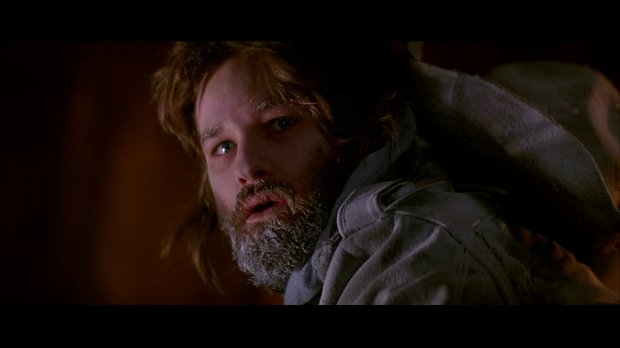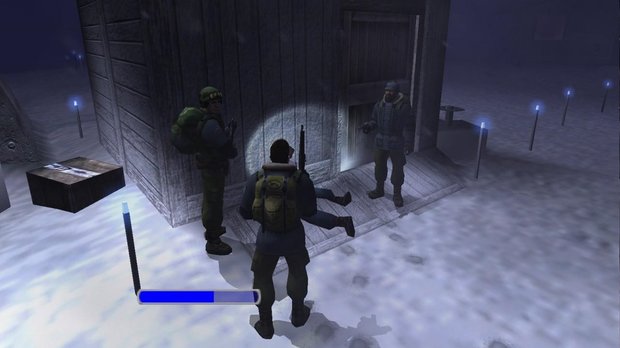The Thing is a movie masterpiece, but its true sequel is a video game
Ah, The Thing, story of the 'thing', an alien shapeshifter that also appears in The Thing - and which would later re-emerge courtesy of… The Thing. Wait, am I high right now? Or a rich Californian girl attempting to make small talk? Well err, no actually. As it happens, that first sentence really does make sense. For you see, despite being based around a singularly inventive movie IP, Universal's marketing department somehow wound up naming every instalment the same damn… thing. Christ, now I'm doing it too…

Inspired by the John W. Campbell story Who Goes There? - and previous, 1951 movie adaptation The Thing from Another World - John Carpenter's The Thing (okay, yeah, I’m tired of saying it now) transported horror bods to the frozen wastes of Antarctica, and to an isolated research station ripe for bodysnatching action. To cut a long - and utterly engrossing - story short, an alien interloper has made its way to earth, forcing Kurt Russell and co to annihilate it before it can escape to the 'mainland'. To do that they'll have to overcome the creature’s inherent gift for disguise, as it alternates between human form and its more 'casual attire' as a fountainous geyser of gore.
Sadly, all hopes of an immediate sequel were quickly put on ice, as the film struggled to succeed against the unconquerable might of E.T. (also released in June of '82). Ultimately however - like many of Carpenter's masterpieces - the film would go on to become something of a cult classic, its slow-burn success story eventually inspiring a sequel. This 2011 release took the form of prequel project, and was also named The Thing, because confusion. And like its predecessor it too suffered at the box office, receiving only a lukewarm critical appraisal.
So much for the franchise, right? You finally get your sequel only for it disappoint. Isn't that always the way of things? (*Prays desperately for The Force Awakens to be good*). Fortunately, the cinematic follow-up wasn't the only sequel to be attempted. Back in 2002, a team at Computer Artworks studios put together another successor project, this time picking up just hours after the events of the film. The game stars Captain Blake, a man who for all the world looks like a young David Boreanaz - if he were composed of ill-fitting cardboard boxes, that is.

Together with his team of crack military troopers, Blake is sent in to discover the whereabouts of the film's ill-fated research crew. Finding the site empty - aside from a small deli's worth of unclaimed barbecue meat - Blake quickly shifts his attentions to the nearby Norwegian camp. It's at this point that things turn decidedly deadly, kicking off a chain of events that will eventually involve Blake in a shady black-ops conspiracy. "Oh no", I hear you scream - "not another 'G-man wants to control the monsters' gimmick, we've all seen Alien 3…". Now normally I'd be inclined to agree with you, but not here.
This is a tie-in title that handles its property with both the upmost respect and ingenuity, paying careful homage to what was while also expanding upon it in organic and interesting ways. Take the game's flamethrower, for example. A crucial element of the movie, Computer Artworks makes this tool an indispensable part of your arsenal. Without it you haven’t a snowball's chance in hell of besting many of the game's enemies. Instead, players must first learn to soften up their targets - via conventional weapons - before switching over to the ol' toaster to put them down for good.
And that's not its only function. The weapon also permits players to set fire to almost anything in their vicinity, a feature that encourages wily gamers to fence in or scare away otherwise implacable foes. Homage, implementation and innovation - The Thing's three central tenets all evident in one amazing weapon. And the bright ideas don't end there…
Weekly digests, tales from the communities you love, and more

Carpenter's masterpiece is remembered today not just for its stark setting and wondrous practical effects, but for the creeping sense of paranoia that turns its erstwhile allies into paranoid husks. Any lesser adaptation might merely have ignored these elements - after all, how do you 'game-ify' an intangible concept like paranoia? But such shortcuts wouldn’t be accepted at CA studios, who replied by creating the deceptively simple 'trust system'.
Playing off the idea that no one knows who to trust (and with good reason, it might be added), said feature allows overly taxed allies to completely 'snap', attacking the player in a fit of fearful self-preservation. To stave off these episodes, players can choose to hand over their precious resources, thereby demonstrating friendliness, but also leaving them vulnerable and open to attack. And vulnerable is exactly how you'll feel, once your buddies start bursting into horrifying Thing-form.
Sometimes scripted, sometimes randomised, these moments nevertheless go a long way towards recreating the mistrustful atmosphere of the movie. When even the man watching your back might turn out to be a ghoul - and at any moment, no less - choosing who to trust with your best weapon quickly becomes a game in and of itself. So, you might say "what's to stop me from capping these turncoats as a purely preventative measure?". Well, for one thing, that isn’t very nice, but more importantly these NPCs also serve a number of important purposes. Some, for example are medics, able to patch you up even when Blake himself is out of medkits. Others are engineers, worth their weight in gold for their ability to deal with otherwise impassable locks.

Oh, and did I forget to mention, these bots actually know how to shoot too? *joyous crowd scenes erupt* How do I know this exactly? Well, early on in proceedings I made the mistake of handing over my sidearm to a man that then promptly disappeared. When the time then came to ingratiate myself to another suspicious trooper, I had no option but to give up my much-prized machine gun. Boasting zero offensive weapons, but finding my hands tied by circumstance, I carefully set about completing my objectives whilst allowing said trooper to clear a path. And clear it out he most certainly did - an act of unlikely competence that made the man's eventual transformation into a mangled stick of Hubba Bubba all the more galling.
All that being said, the game isn't without its issues. For every neat touch, such as the ever-dwindling exposure meter (i.e. stay out of the storm) there are an equal number of needlessly fiddly details. For one, the game insists on loading its own saves in preference to the player's, oftentimes forcing you back to the start screen in order to select your game. Other concepts prove similarly undercooked, such as the portable blood tests scattered throughout the camp. At first, they're rare enough to feel special - as though choosing whom to test might mean life or death. However, by the halfway point so many of your allies will have undoubtedly turned - yes, even those already deemed 'safe' - that such testing largely becomes redundant.
Minor nitpickings aside, The Thing is a title that deserves to be played by just about any fan of the survival horror genre. Sure, it may be a little rough around the edges - debuting in 2002 will do that to you - but don't let these obvious anachronisms stop you. Pick it up on the cheap for a stone cold Hallowe'en treat.



